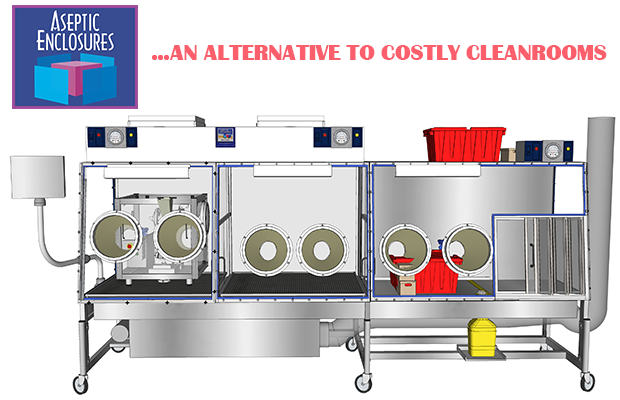Controlling microbial ingress into the cleanroom is a critical concern for the entire cleaning and disinfection process. Components, personnel, carts, tanks, tools, cleaning supplies, and instruments that are transferred into the clean area should be clean and free of contamination. Cross contamination is easier to prevent than to correct.
Cleaning is the first step of the cleaning, disinfection, and/or sterilization process. Proper cleaning is important for several reasons:
- Dirt may physically prevent the disinfectant from encountering microorganisms.
- Chemical residues could potentially react with and inactivate disinfectants.
- Difficult to reach surfaces may not be cleaned properly.
Surfaces should be smooth and easy to clean. Porous surfaces can harbor microorganisms, interfere with microbial recovery, and interfere with disinfection efforts. Porous surfaces can make it difficult to recover microorganisms during environmental monitoring and difficult to destroy the microorganisms during disinfection. For this reason, certain materials, such as wooden pallets or cardboard, may be prohibited from entering the cleanrooms. In addition, corrosion, rust, and pitting of materials should be avoided.
But due to flaws in design, some rooms are simply not made to be kept clean or cleanable. We have designed and built many cleanrooms and keeping them maintainable has been our biggest goal.
Once the surfaces are properly cleaned, they can be disinfected. The aim of disinfection is to reduce viable contamination. It is important to note that disinfectants must be qualified. Multiple FDA Forms 483 have been written in this regard. The qualification study helps to establish the appropriate concentrations of disinfectants and the effective wet contact time. If disinfectants are not properly prepared, handled, applied, or used, their effectiveness to destroy microorganisms can be compromised. In addition, sporicidal agents should be rotated into the cleaning and disinfection program.10
Another important program to prevent contamination is the material and personnel transfer program. Materials must be properly disinfected and transferred through dedicated pathways to prevent the ingress of microorganisms. Established transfer methods may include:
- Directly sterilizing items into an area (e.g., double-door autoclave)
- Using multiple bags and removing the outer bag during the transfer to a cleaner classified area
- Using chemical disinfection during the transfer process in a material airlock.
It’s important to add that these methods are a big stress on the budget, both on the equipment acquisition side and on the operational costs and maintenance fees.
The material and personnel transfer program also establishes gowning procedures and hygiene requirements that personnel must follow to enter cleanrooms. Personnel must follow established process flows and only enter and exit the cleanroom through dedicated paths to avoid cross contamination.
Equipment and supplies should have smooth, cleanable surfaces and should be cleaned with sterile, effective disinfectants and tools that do not leave a residue.11 Unnecessary equipment should not be stored in ISO 5 areas.11 Because equipment in motion can generate particles, ISO 5 areas should be qualified in the state of operation.11
One of the most successful processes in controlling microbial contamination is engineering to remove people from the process. Two successful inventions are isolator systems and reduced access barrier systems (RABS).
Isolator systems are fully enclosed with dedicated air, and they provide the highest level of protection. The inside of the isolator can be decontaminated with vaporized hydrogen peroxide, and since the system is self-contained, the surrounding background room can be downgraded and operators don’t have to be fully gowned.
RABS can be installed on existing machines. They are typically rigid transparent walls with glove ports that separate the filling line from the surrounding area. Operators must be gowned in full aseptic garb.
Till now we have completed hundreds of projects where we strived to keep the cleanroom clean. Our team of dedicated engineers have developed a standardized XLTC isolation product line that has been flawless in controlling microbial contamination.
Contact our representatives to learn more about the XLTC range of products.

